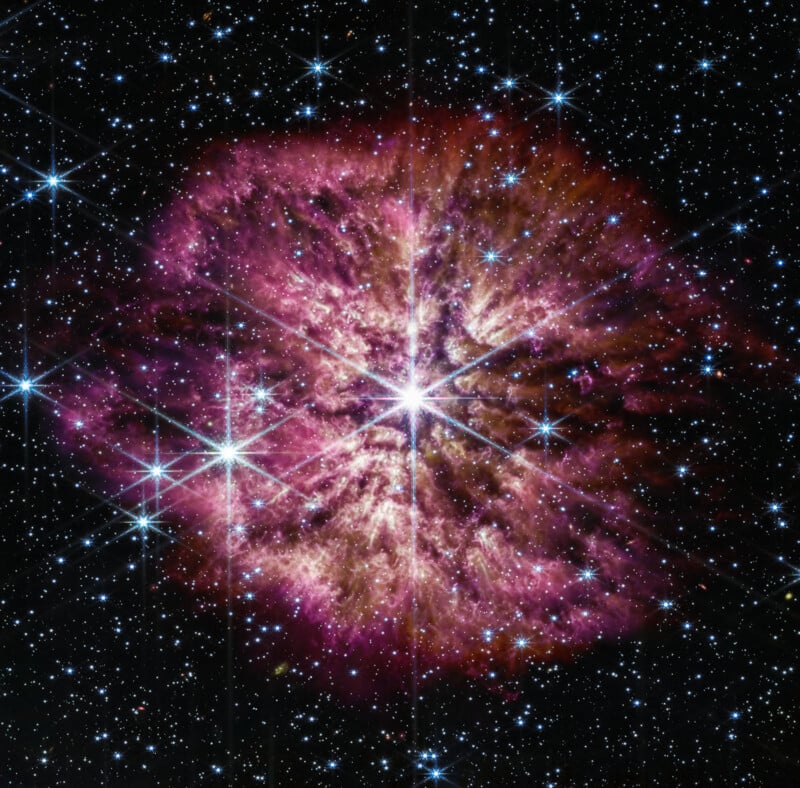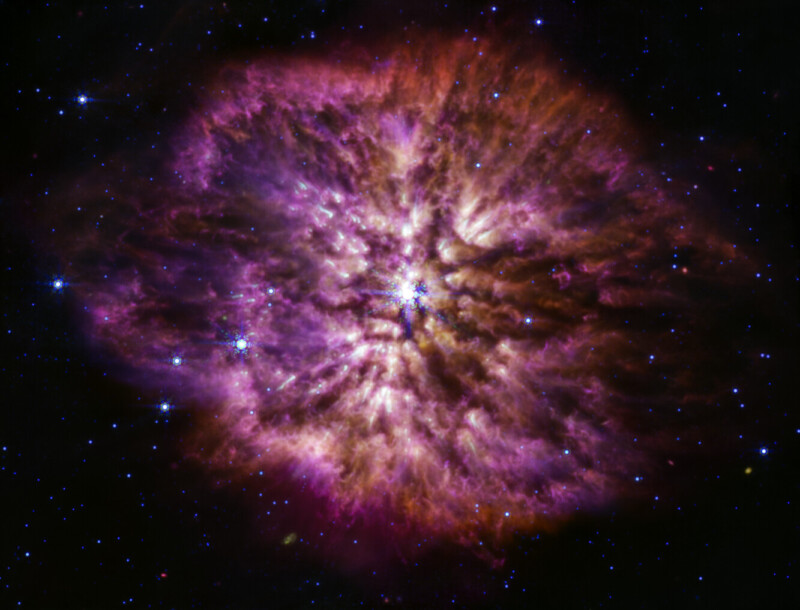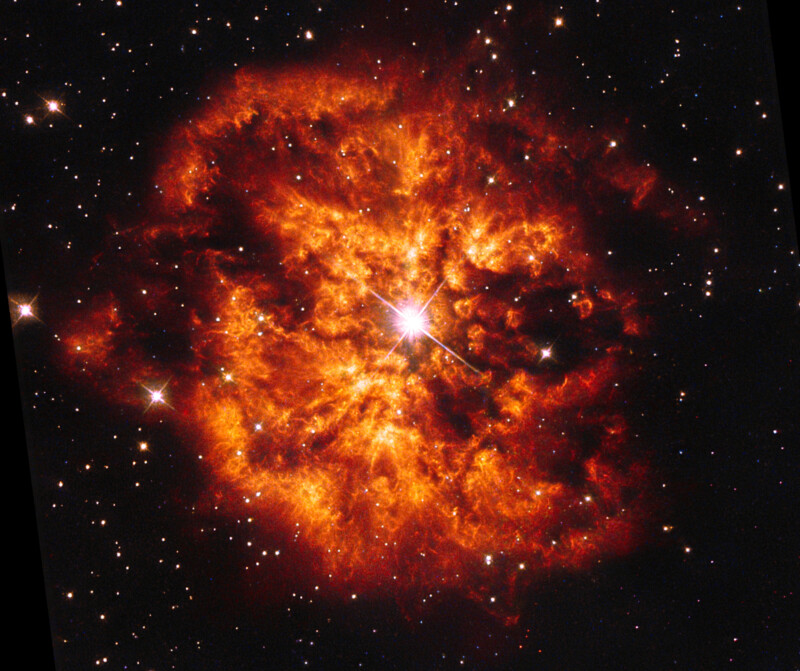Webb Photographs the Rarely-Seen Moments Just Before a Supernova

The James Webb Space Telescope has captured what is known as a Wolf-Rayet star, the brief phase that comes just before it goes supernova. Due to how short the time is that a star is in this phase, it is one of the rarest astronomical observations.
According to the European Space Agency (ESA), this capture of a Wolf-Rayet star was one of the first observations made by Webb, although the photos are only being released today. The photo is specifically of a star known as WR 124 and shows what the ESA calls “unprecedented detail” of the celestial object that lies 15,000 light-years away from Earth in the constellation Sagittarius.
“Massive stars race through their life cycles, and not all of them go through a brief Wolf-Rayet phase before becoming a supernova, making Webb’s detailed observations valuable to astronomers,” the ESA explains.
“Wolf-Rayet stars are in the process of casting off their outer layers, resulting in their characteristic halos of gas and dust. The star WR 124 is 30 times the mass of the Sun and has shed 10 Suns-worth of material — so far. As the ejected gas moves away from the star and cools, cosmic dust forms and glows in the infrared light detectable by Webb.”
The ESA has shared two images of the Wolf-Rayet star: one shows just the mid-infrared image (captured by Webb’s MIRI camera) as shown below, while the other shows a near-infrared image (captured by Webb’s NIRCam) combined with the MIRI into a composite, as seen above.

The background stars and galaxies in the image provide a sense of scale to the colored gas and dust that are visible in the photo — it’s being ejected over an area 10 light-years across. Speaking of dust, the ESA explains that this matter is very important to the way the Universe works, from how stars ar formed to how it gathers together to form planets.
“The origin of cosmic dust that can survive a supernova blast and contribute to the Universe’s overall ‘dust budget’ is of great interest to astronomers,” the ESA says.
“Despite the many essential roles that dust plays, there is still more dust in the Universe than astronomers’ current dust-formation theories can explain. The Universe is operating with a dust budget surplus.”
As a showcase for just how advanced Webb’s imaging capability is, the ESA has also uploaded a photo of WR 124 as captured by the Hubble Space Telescope in 2015:

The ESA has also provided a draggable slider tool that shows the difference between what the two observatories are able to capture.
The full-resolution images of the Wolf-Rayet star WR 124 can be downloaded from the ESA’s website.
Image credits: NASA, ESA, CSA, STScI, Webb ERO Production Team